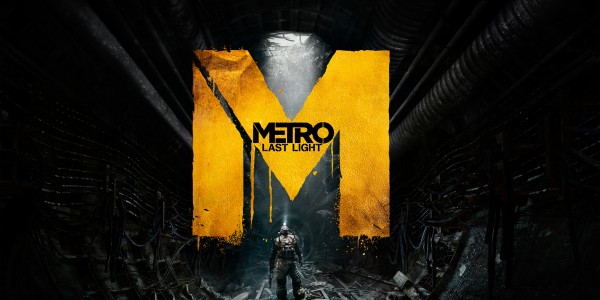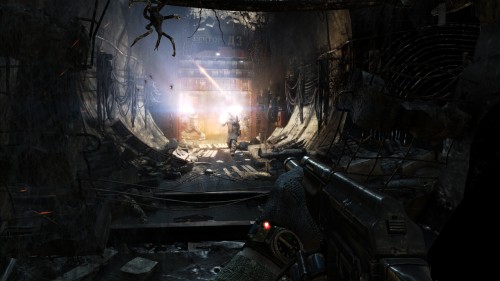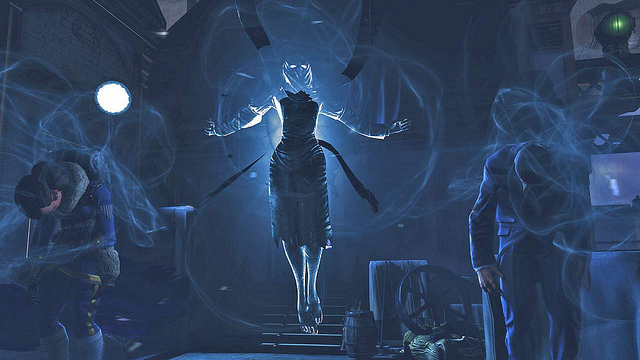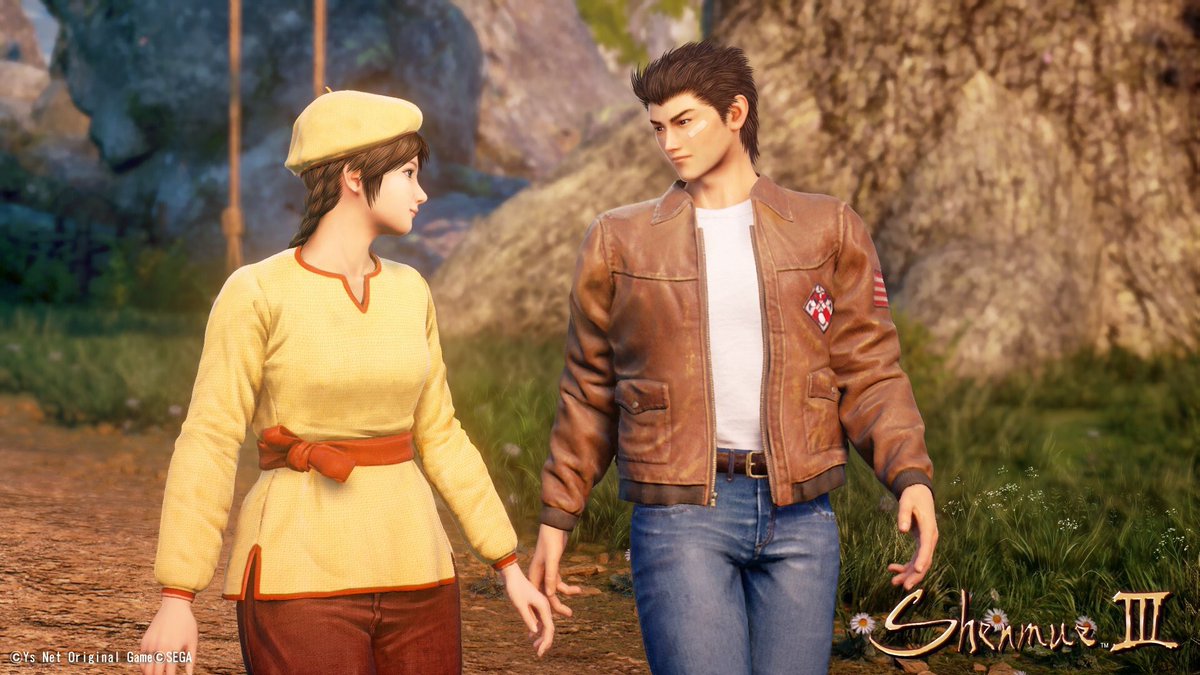
To me, the setting is probably the most important aspect of playing a game. If I think about all the games I like, they have one thing in common: a well-realised setting in which they take place. From the classic Shenmue through to the recent Bioshock Infinite, I can’t get enough of the imaginative worlds that video games can put me in.
A well-realised setting helps draw you into a game, and sometimes even allows you to overlook any flaws the game otherwise might have. It gives you the desire to see what’s around the next corner, or down the next tunnel. Time seems to stop flowing completely when you’re immersed in such a world, hours passing by without notice or care.
The setting for Metro: Last Light very much succeeds in doing all these things. The game’s impressive visuals bring to life a grim, post-apocalyptic future where Moscow has been bombed to rubble, and the survivors eke out an existence in the city’s extensive subway system, after having escaped from the irradiated surface.
One of the reasons I love this setting such so much is because it shows me a place that I may never otherwise see. Moscow is a city rich in history and culture, and even its relatively modern (the first parts were constructed in 1935) subway system is an architectural marvel. The Communists believed that railway would be the backbone of the Soviet Union, and that belief is very much expressed in the early Metro system.
Metro: Last Light is set in a world where such grandiose ideals have long been forgotten. The Metro is in a dramatic state of disrepair. Even so, glimpses of the original architecture shine through, always reminding you of what once was. From the dark railway tunnels, through to the large, expansive stations, there’s always a sense of the lost age that built the system.
The stations are occupied by different groups vying for control of the Metro. Nazis, Communists, the free-market Hansa organisation and your own Rangers faction are all fighting for territory, and each one has draped their symbols and styles over the existing structures, taking ownership but never quite hiding the truth of the system. One station, the free town of Venice, reminded me a lot, in concept, of the Cardboard City from William Gibson’s Idoru.
Even the above-ground sections offer a brilliant view of the ruined city of Moscow. These above-ground sections reminded me of Half-Life 2’s City 17, which is also an excellent example of how a setting can bring a game from merely being great to being a classic.
Of course, while City 17 is inspired by post-Communist Russian cities, it isn’t a real place, and the artists had to create their setting out of whole cloth. Metro: Last Light has a pre-existing location that developers 4A Games can use for their post-apocalyptic vision. They also had a large shared universe, originated in Dmitry Glukhovsky’s Metro 2033 novel (the game of which Metro Last Light is a sequel to) and now covering dozens of works by several authors, to draw upon. It would have been nearly impossible for 4A to create a game that didn’t have a strong sense of place with this background.
All this adds up to a game where the post-apocalyptic Metro system is a much a character as Artyom, the game’s silent protagonist. Everything revolves around the struggle for survival and control of this magnificent place, and while the world of Metro: Last Light often feels hopeless and oppressive, there a moments when you just can’t help but marvel at the beauty of the place, and the effort that 4A Games put into recreating it for their game.
This is a sponsored post, but opinions are my own.







